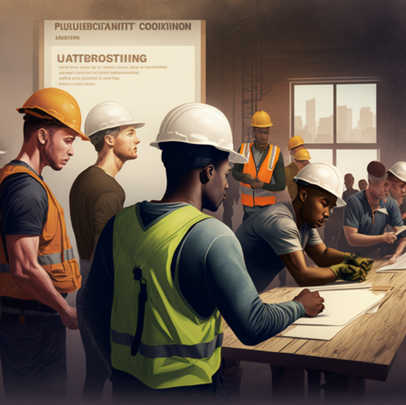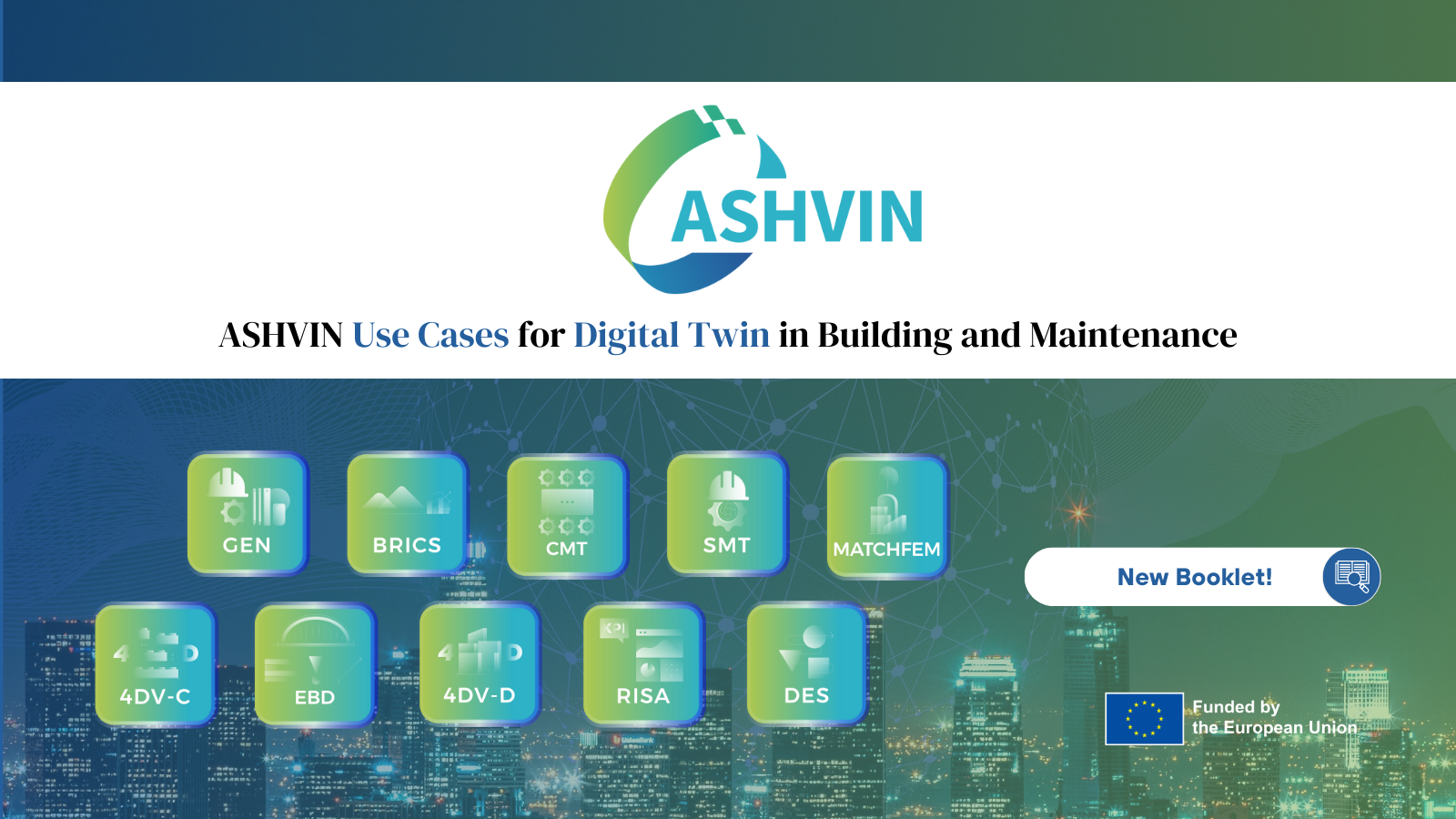This year kick starts the European Year of Skills (↗️), adopted by the European Commission to focus on empowering workers on green and digital transitions. As a European project aiming to digitize and transform the construction industry, ASHVIN’s commitment is to empower the stakeholders’ to benefit from the developed novel digital solutions.
The digital transition must be fair and just. But unfortunately, more than three-quarters of EU companies need help finding workers with the necessary skills. Therefore, to engage and train our end-users (i.e., the construction site managers) throughout the development of our tools, we have implemented diverse exploitation activities and created material such as video tutorials. These activities are essential to ensure that the ASHVIN solution is used beyond the project duration.
Digitizing the construction industry
In Europe, four from 10 adults and every third person who works need to gain basic digital skills. As far as the construction sector is concerned, the industry is the least digitized, with flat or falling productivity rates. For that, the construction sector requires digital skills to manage the growing need for collecting, analyzing, and managing data from construction sites. Future workers must be digitally savvy to use smart devices to steer equipment, and monitor processes and operations on the job site.
The global labour-productivity growth in construction has averaged only 1 per cent a year over the past two decades. Moreover, construction is the most dangerous occupation with complications in safety planning due to its dynamic nature. In this context, the ASHVIN solution is standardized to assure the safety of workers and productivity by implementing realistic site-specific training programs accounting for digital twin-based data of previous site activities.

Improving knowledge circulation and reusability
Not only digital competencies but also knowledge about how to deliver high-performing products, such as energy-efficient buildings or self-monitoring bridges, is required to transform the sector. ASHVIN contributes to the BUILD UP Skills (↗️), the EU initiative -coordinated by the Executive Agency for Small and Medium-sized Enterprises (EASME) – to empower the next generation of construction sector workers with the skills and knowledge needed to ensure building and renovation projects meet stringent energy efficiency requirements.
In addition, academic partners of the ASHVIN project aim to improve education and offer programs of studies in civil engineering and architecture that integrate the advantages of using digital twins. For instance, the Technical University of Berlin (TUB) has provided continuing education programs as training events to allow practitioners to learn how to implement and use the ASHVIN tools. Furthermore, the Erasmus University of Rotterdam (EUR) uses the project results directly to improve its educational offers.
For the public, ASHVIN has shared open-access findings with all stakeholders, such as articles, news, and deliverables, in its knowledgehub (↗️) and via Zenodo (↗️). Scientific publications such as the “Open‐source terrestrial laser scanner for the virtualization of geometrical entities in AEC classrooms” and the “Virtual construction with digital twins – The key for leanly planned complex construction systems” explain the potential of digital twins to a broader audience. Mainly, the former by Polytechnical University of Catalunya (UPC) partner represents the transferring knowledge into the industry, the new set of sensing methodologies for structural monitoring and the tailor-made connection to the digital twin structure.
Communicating to accelerate the uptake of digital twin technologies
Throughout the two years of the project, ASHVIN has collaborated with initiatives having a specific mandate on industrial digitization. Reaching its stakeholders, listening to their needs, and developing the tools to empower them.
As ASHVIN has entered the final project year, it is more than necessary to understand the digital ASHVIN tools to optimize the collective performance of productivity, costs and safety in buildings. With the ten digital ASHVIN tools, in addition to accelerating the uptake of digital twin technology in the construction industry and attracting the younger generation to replace older workers, the shift towards a digital scenario might contribute to reversing this trend within the ‘Construction 4.0’.
Stay tuned for more ASHVIN results, and connect with us through our LinkedIn or Twitter communities!





